Monday, January 29, 2007
Essential Oil of Everything
Everything has an essential oil...olive oil, coconut oil, banana oil, cow tongue's oil, rapeseed and canola oils. There are oils derived from animal fat and from squeezing coal, and there are essential oils from every flower in the world. Since the fat that builds our bodies comes exclusively from what we eat (at least some classes of fat anyway), we are the rainbow mix of essential oils we consume. There is good evidence that the properties of nerve action potential conduction are modulated by the fatty acid composition of the glial membrane. Maybe fish does make you smarter. Here is a technique for identifying bacteria based on their unique spectrum of lipids.
Saturday, January 27, 2007
Why Do Scientists in White Lab Coats Study White Mice?

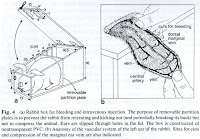

....because it's almost as good as studying humans, for whatever characteristic of interest. For example, researchers at the UA study novelty-seeking in mice because they are interested in novelty-seeking in humans. And they study monkeys because they are better analogues of humans. But it is precisely this analogy to humans that makes it morally wrong to use these animals for research, just as it is morally wrong to use humans for this kind of research. Catch-22.
Faces at work
 Kent KS,Hildebrand JG. Cephalic sensory pathways in the central nervous system of larval Manduca sexta (Lepidoptera : Sphingidae). Philos Trans R Soc Lond B Biol Sci. 1987 Jan 27;315(1168):1-36.
Kent KS,Hildebrand JG. Cephalic sensory pathways in the central nervous system of larval Manduca sexta (Lepidoptera : Sphingidae). Philos Trans R Soc Lond B Biol Sci. 1987 Jan 27;315(1168):1-36.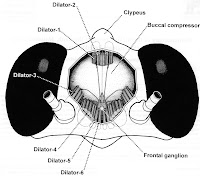
Davis, NT; Hildebrand,JG. Neuroanatomy of the sucking pump of the moth, Manduca sexta (Sphingidae, Lepidoptera). Arthropod Structure and Development, Volume: 35, Issue: 1, March, 2006 pp. 15-33
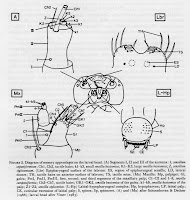
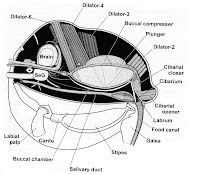
Wednesday, January 24, 2007
Definately Watson-Worthy.
- Ecotourism, arrogance and the tribulations of ethnic peoples. e.g. Kayan people who live in Thailand, now relegated by the Thai government to a so-called "human zoo".
- Phenology
- (ex)Soviet Science
- Incarceration: Canary Islands, Australia, Alcatraz
- Yoshio Komatsu: Wonderful Houses
- David Abram: Folk Medicine and Magic
- a quote from Paul Hawken
"CLAYTON THOMAS-MÜLLER SPEAKS to a community gathering of the Cree nation about waste sites on their native land in Northern Alberta, toxic lakes so big you can see them from outer space. Shi Lihong, founder of Wild China Films, makes documentaries with her husband on migrants displaced by construction of large dams. Rosalina Tuyuc Velásquez, a member of the Maya-Kaqchikel people, fights for full accountability for tens of thousands of people killed by death squads in Guatemala. Rodrigo Baggio retrieves discarded computers from New York, London, and Toronto and installs them in the favelas of Brazil, where he and his staff teach computer skills to poor children. Biologist Janine Benyus speaks to twelve hundred executives at a business forum in Queensland about biologically inspired industrial development. Paul Sykes, a volunteer for the National Audubon Society, completes his fifty-second Christmas Bird Count in Little Creek, Virginia, joining fifty thousand other people who tally 70 million birds on one day. Sumita Dasgupta leads students, engineers, journalists, farmers, and Adivasis (tribal people) on a ten-day trek through Gujarat exploring the rebirth of ancient rainwater harvesting and catchment systems that bring life back to drought-prone areas of India. Silas Kpanan’Ayoung Siakor, who exposed links between the genocidal policies of former president Charles Taylor and illegal logging in Liberia, now creates certified, sustainable timber policies."
Wednesday, January 17, 2007
Aspirin, tinnitus, and OAEs
Otoacoustic emissions (or OAEs) are sounds that your ear makes on its own and as a response to environmental sounds. It appears to be some sort of active resonance or tuning and is different from tinnitus, the ringing sometimes heard in quiet rooms. OAEs provide a non-invasive way of evaluating the health of the ear; OAEs disappear almost immediately upon onset of deafness or death (it was only recently that scientists realized that live ears respond differently from dead ones). Interestingly, aspirin also abolishes OAEs. This is a whole new field of research.
Where the Sinuses (and nasal meati) are...
 Yawning, sneezing, breathing from the belly or from the upper chest affect the mucosal lining of our nasal meati (single: meatus), the labyrinths formed above the palate and oral cavity, on either side of the nasal septum, by scroll-shaped bones known as turbinates. As if this complicated spelunking stalactite cave system (connected to the sinuses and the ears) weren't complicated enough, it turns out that the mucus membranes are dynamic, alive, temperamental. They can close off one nostril or the other. They are affected by certain odors, CO2, humidity, pressure, and emotional state. By some accounts this drippy cave of stalactites and boogers acts much like a gas chromatograph, where the heavier or more reactive chemicals are sorbed (either ab- or ad-) onto the membranes first, while the lighter or less reactive ones filter deeper into the cavern. Today, Dr. Bruce Halpern of Cornell confirmed that discrimination is much easier than identification of odors. The trigeminal system includes nerves that enervate throughout the oral and nasal cavity. Interestingly, when the primary olfactory epithelium is not used, menthol and peppermint can still be sensed, presumably by nerves on the roof of the mouth.
Yawning, sneezing, breathing from the belly or from the upper chest affect the mucosal lining of our nasal meati (single: meatus), the labyrinths formed above the palate and oral cavity, on either side of the nasal septum, by scroll-shaped bones known as turbinates. As if this complicated spelunking stalactite cave system (connected to the sinuses and the ears) weren't complicated enough, it turns out that the mucus membranes are dynamic, alive, temperamental. They can close off one nostril or the other. They are affected by certain odors, CO2, humidity, pressure, and emotional state. By some accounts this drippy cave of stalactites and boogers acts much like a gas chromatograph, where the heavier or more reactive chemicals are sorbed (either ab- or ad-) onto the membranes first, while the lighter or less reactive ones filter deeper into the cavern. Today, Dr. Bruce Halpern of Cornell confirmed that discrimination is much easier than identification of odors. The trigeminal system includes nerves that enervate throughout the oral and nasal cavity. Interestingly, when the primary olfactory epithelium is not used, menthol and peppermint can still be sensed, presumably by nerves on the roof of the mouth.
At top right is a CT-based reconstruction of the nasal cavity from Zhao et al, 2004. Unfortunately the structure of the turbinates, septum, velum, palate (not to mention sinuses etc) are not easily visible. At lower right is an image from Heilmann and Hummel showing their procedure for discriminating between orthonasal and retronasal smelling. This is usually done under anesthesia, but for the sake of science the smiling volunteer is doing it cold-turkey.
Monday, January 08, 2007
Industrialism vs Natural Agriculture
You see a system that runs on sun and rain, year after year, with no one to cultivate the soil or plant the seeds. (Benyus)
Wendell Berry:
THE WAY OF INDUSTRIALISM is the way of the machine. To the industrial mind, a machine is not merely an instrument for doing work or amusing ourselves or making war; it is an explanation of the world and of life. Because industrialism cannot understand living things except as machines, and can grant them no value that is not utilitarian, it conceives of farming and forestry as forms of mining; it cannot use the land without abusing it.
I hold the most archaic values on earth, they go back to the Paleolithic; I try to hold history and the wilderness in mind that I may approach the true nature of things, and stand against the unbalance and ignorance of our times.
Identification with that other totally alien, nonhuman can be experienced in tilling the soil, shaping word or stone, the lust and ecstasy of the dance, or the power-vision in solitude.
Gary Snyder:
"Wild mind means elegantly self-disciplined, self-regulating. That's what wilderness is. Nobody has a management plan for it."
Notes
45,000 sq ft to feed a person, 10,000 vegetarian
biointensive minifarming
deep cultivation to aid root growth
compost crops
closely spaced palnts in widebeds to optimize microclimates
interplanting of mixed species to foil pests
bioneer kenny ausubel
the land institute
ecology action
masanobu fukuoka
ecoagriculture
Natural Systems Agriculture
Wes Jackson
wallace stevens
gary snyder's essays on the wild.
Wendell Berry:
THE WAY OF INDUSTRIALISM is the way of the machine. To the industrial mind, a machine is not merely an instrument for doing work or amusing ourselves or making war; it is an explanation of the world and of life. Because industrialism cannot understand living things except as machines, and can grant them no value that is not utilitarian, it conceives of farming and forestry as forms of mining; it cannot use the land without abusing it.
I hold the most archaic values on earth, they go back to the Paleolithic; I try to hold history and the wilderness in mind that I may approach the true nature of things, and stand against the unbalance and ignorance of our times.
Identification with that other totally alien, nonhuman can be experienced in tilling the soil, shaping word or stone, the lust and ecstasy of the dance, or the power-vision in solitude.
Gary Snyder:
"Wild mind means elegantly self-disciplined, self-regulating. That's what wilderness is. Nobody has a management plan for it."
Notes
45,000 sq ft to feed a person, 10,000 vegetarian
biointensive minifarming
deep cultivation to aid root growth
compost crops
closely spaced palnts in widebeds to optimize microclimates
interplanting of mixed species to foil pests
bioneer kenny ausubel
the land institute
ecology action
masanobu fukuoka
ecoagriculture
Natural Systems Agriculture
Wes Jackson
wallace stevens
gary snyder's essays on the wild.
Ecosphere vs. Microcosm
ecosphere vs. microcosm (distinction from Whole Earth Review):
Right off, to avoid confusion, the Ecosphere is not a "microcosm." It is not an aquarium or a farm in the woods or a greenhouse. Microcosms are small biological samples of the planet, physically removed from their natural surroundings, but not completely isolated from global matter exchange. Microcosms can be affected by the great material gifts that buffer the planet: water, vitamins, minerals, oxygen, carbon dioxide, chlorophyll, etc. The Ecosphere has no buffer, no huge water cycle or feedback loops outside its two-print interior. We may pretend to dwell in an isolated volume of the biosphere -- call it a watershed, a biogeographical region, a county, or a nation -- but compared to the Ecosphere, our lives are inseparable from wildly open-ended material influences.
The Tucson company Eco Sphere makes successful ecosystems. The Tucson experiment Biosphere II built a failed ecosystem. Anybody can make a successful (or unsuccessful) microcosm in an aquarium. Which is a good model system?
Right off, to avoid confusion, the Ecosphere is not a "microcosm." It is not an aquarium or a farm in the woods or a greenhouse. Microcosms are small biological samples of the planet, physically removed from their natural surroundings, but not completely isolated from global matter exchange. Microcosms can be affected by the great material gifts that buffer the planet: water, vitamins, minerals, oxygen, carbon dioxide, chlorophyll, etc. The Ecosphere has no buffer, no huge water cycle or feedback loops outside its two-print interior. We may pretend to dwell in an isolated volume of the biosphere -- call it a watershed, a biogeographical region, a county, or a nation -- but compared to the Ecosphere, our lives are inseparable from wildly open-ended material influences.
The Tucson company Eco Sphere makes successful ecosystems. The Tucson experiment Biosphere II built a failed ecosystem. Anybody can make a successful (or unsuccessful) microcosm in an aquarium. Which is a good model system?
K visit
Memories of K
Winter sunlight limpid on the playground
spinning in circles
shocked on the electric fence
i remain unshockable
stuck on the roof
climbing the target
finding the car key

sunset on the car
back from mexico, arguing about diet (the new politics)
dehydrated go game w/ sweaty mexican musician
rock climbing ponatoc ridge,
rocky and dark
lost, smoking at Sanjay's
absence present as a palpable apparition
a semi-circular desk full of dictionaries
more than the some of stones
album leaf or coma lily?
foot found car key
slippers and shooting stars
Maxwell's demon ripples in the pool
hot tub to pool and back again
out of chaos, order
out of order, chaos
apples and goat cheese and turkish apricots
approach the glass. excellent. now turn around.
Places to Go
TREKING
LOCAL
ISLANDS
SPECIAL INTEREST
- English or Scottish Coast (B&B Inns)
- Japanese Shinto Meditation Trails
- Switzerland Alps
- Kauai North (and west) Coast
LOCAL
- Bisbee: Cafe Roka five-star eating in abandoned cobblestone town-come-artist colony in SE Arizona
- Picacho del Diablo: San Jacinto visible 200 miles N?
ISLANDS
- New Caledonia (makes a triangle with Australia and New Zealand)
- Vanuatu: Cargo cult and volcanoes
- Of course, the opposite spot on the world: Heard and McDonald Island
SPECIAL INTEREST
- Dornach, Switzerland: Goetheanum
Where in the world is the actual opposite inverse of Tucson, Arizona?
I have been claiming that Tucson is the climatic inverse of Seattle, but where is the geographic inverse? Where is the exact opposite place on the world from where you are standing? Is there a person there likewise rooted to the ground, lost in equivalent, yet opposite, ponderings?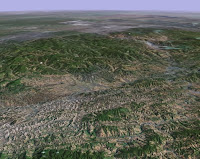
If we simply invert Tucson longitude west for longitude east, we come to a peaceful valley in the mountains of central China...
If we go for the actual opposite longitude (through the pole of the earth)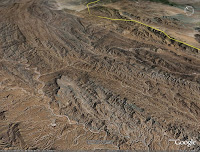 the result is a dry, mountainous region on the Afghan-Pakistan border. ..
the result is a dry, mountainous region on the Afghan-Pakistan border. ..
And if we flip both the latitude and longitude to give the actual total opposite location on the Earth (drawing a line from Tucson through the center of the Earth) we arrive at last, on the mossy islands of Heard and McDonald in the far-south Indian Ocean:
to give the actual total opposite location on the Earth (drawing a line from Tucson through the center of the Earth) we arrive at last, on the mossy islands of Heard and McDonald in the far-south Indian Ocean:


If we simply invert Tucson longitude west for longitude east, we come to a peaceful valley in the mountains of central China...
If we go for the actual opposite longitude (through the pole of the earth)
 the result is a dry, mountainous region on the Afghan-Pakistan border. ..
the result is a dry, mountainous region on the Afghan-Pakistan border. ..And if we flip both the latitude and longitude
 to give the actual total opposite location on the Earth (drawing a line from Tucson through the center of the Earth) we arrive at last, on the mossy islands of Heard and McDonald in the far-south Indian Ocean:
to give the actual total opposite location on the Earth (drawing a line from Tucson through the center of the Earth) we arrive at last, on the mossy islands of Heard and McDonald in the far-south Indian Ocean:
Friday, January 05, 2007
Southern Arizona Mountain Ranges
The names roll off the tongue like clattering rocks on a sun-blistered trail: Tumacacori, Atascosa, Baboquivari, Tortolita. But there are endless pine-forests to match the slag-heaps: Galiuro, Pinaleno, Catalina, Chiricahua, Huachuca. The rock-ribs show through in all of them, whether haloed by the waxy pine-needle or the nectared cactus-needle .
The Peloncillo mountains are north of the Chiricahua and I-10 on the Arizona/NM border. Heading west the Pinaleno then the Galiuro then the Catalinas and then the Tucson valley and the Tucson mountains. The Tortolitas are the ironwood-fringed hills due north of Tucson between the I-10 and the 77. Heading east from Tucson past the Rincons on the left and the Santa Ritas on the right, then the Dragoons, Huachucas, and back again to the Chiricahua. If, instead of I-10, you take the 19 south the Santa Ritas will be on your left and the Tumacacori then the Atascosa then the Pajarito on your right. If you leave Tucson heading west on the 86 the Tucson mountains are to the right and then you pass the Baboquivari mountains and Kitt Peak on the left before Organ Pipe.
Organizations that do conservation work in the basin and range area of southern Arizona, where the islands are all in the sky.
http://www.tumacacoriwild.org/
http://www.skyislandalliance.org/indexSIA.htm
http://www.rinconinstitute.org/
http://nmwild.org/
http://www.ugwa.org/
Search southern Arizona highpoints:
http://www.peakbagger.com/range.aspx?rid=13531
Subscribe to:
Posts (Atom)